Opinion & Analysis
Hello USGA, we need to talk….
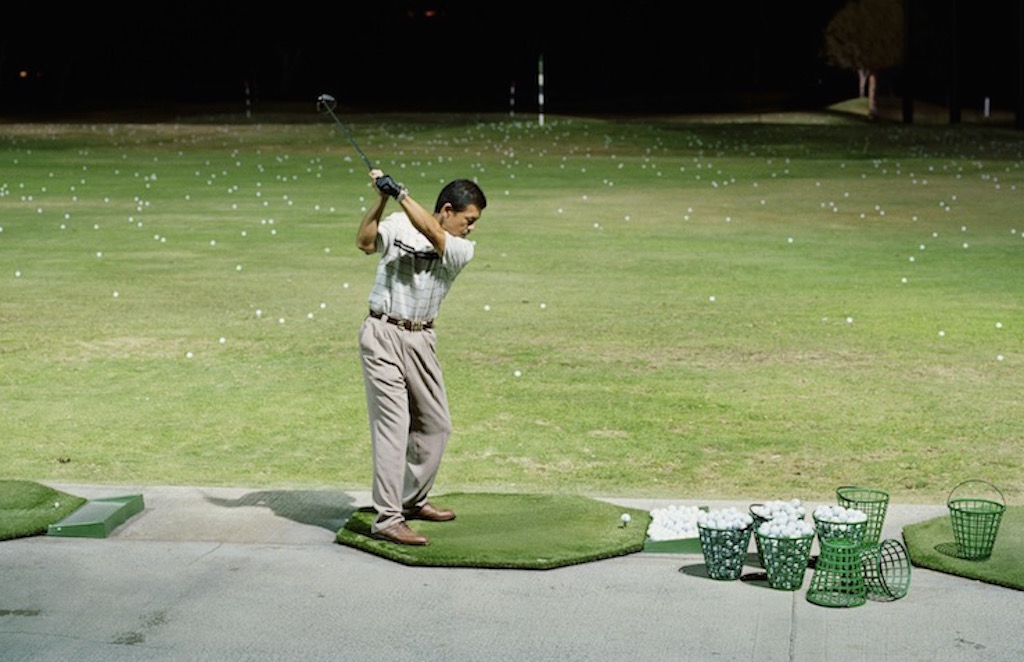
It’s me, the amateur golfer.
We haven’t spoken in a while and I’ve been trying to reach you. I know you’ve had a lot on your mind lately and I feel like maybe I’m not at the top of the list of your callbacks, so I decided to send you this letter. I hope it finds you well.
You know and I know that people can drift apart sometimes. I know you’ve had a lot going on lately with work. First, I’d like to congratulate you on all of your recent success. I watched your U.S. Open this year where the winner, Brooks Koepka, earned $2.16 million. I read that this is the first time a winner’s share in any major tournament had exceeded $2 million! And in your Open! That is an impressive amount! I also read the total purse was more than $12 million. That’s also getting up there, isn’t it? I mean in 1996, the year before Tiger Woods won his first major, the total purse was only $2.4 million and the winner’s share was a hair over $400K.
You’re primetime now. Places like Chambers Bay and Erin Hills basically build courses just for you. You’ve really made it when guys start doing that, and now with that TV and sponsorship money… I mean five times the purse from ’96! Wow! And it’s not just Koepka! I read in Forbes that Roger Federer recently surpassed our old friend Tiger Woods as the top earner in individual sports with more than $110 million in tournament earnings. Tiger hasn’t even played much since 2009 and he was still No. 1 eight years later! Pros in your sport are doing really well. LOTS of money out there in the pro game. Your game, after all.
But it’s just… I feel like you don’t notice me anymore no matter what I do. I didn’t want your public success to affect the nice thing we had going, but lately that’s what it feels like. You’ve been making these comments; you’ve been talking to our friends like the media and saying hurtful things. You never did this in 1996, and your research printed in Golf Digest shows I wasn’t all that different back then. Please know that I have been trying to better myself though. For instance, I started using wider and squarer grooves hoping to get better for you… but I really didn’t. You didn’t notice my grooves though until THEY started using them. THEY started calling it things like “bomb and gouge” and saying it changed things. I never felt it changed things for me, and I didn’t think it changed things between us. Then you stuck the dagger in me again USGA, because for years I’d been trying to better myself by anchoring putters to my body. Again, not much success.
In 20+ years, my average index dropped from 16 to 14.5. That’s progress, but not enough to change me completely. I didn’t think it was enough for you to notice. But you noticed Keegan Bradley and Adam Scott for using anchored putters, didn’t you? Then you told me it wasn’t working out for us.
I have to be honest. It hurts. But again, I try to stay positive and think there is a future here. But now I see you in the press saying that I hit the ball too far and this is ruining things again. Talk about sending me mixed messages! Didn’t you tell me last year that I should “Tee It Forward” to help things between us? The next year you’re telling our friends that I hit it too far and am causing a “horrible impact” on your game because you have to lengthen courses? Why was I teeing it forward? Trackman says my average drive is 214 yards! Or were you talking about THEM again? Do you remember me USGA? Do you think about me anymore? Because I’ve been to all of your 11,000 public courses. Tell me how many of those you’ve lengthened because of me.
It’s not like I don’t do anything for you, USGA. I spend more than $2.5 billion on your game. You want to ignore me for the glitz and glamour of THEM, but it’s me who makes you what you are. Without me, you don’t have your sport. You don’t have your TV crews or your U.S. Open bids. You don’t have your “open doctors” adding 600 yards to a course that you’ll eventually say “I” made you lengthen. And you know what? There are 20 million of me, and it’s ME who generates interest in your game. I got 2.2 million people trying your game for the first time in 2015. I got 37 million people saying they were interested in playing your game that same year. These are some of the highest numbers ever, and you ignore ME? You ignore me for Dustin and Jordan and Rory?
Don’t push me anymore USGA. People change and things can change, but remember I was there for you in the beginning and helped get us to where we are. Please remember that before you do anything that really hurts me.
Sincerely,
The Amateur Golfer
- LIKE1806
- LEGIT176
- WOW82
- LOL22
- IDHT4
- FLOP23
- OB9
- SHANK157
19th Hole
Vincenzi’s 2024 Zurich Classic of New Orleans betting preview

The PGA TOUR heads to New Orleans to play the 2023 Zurich Classic of New Orleans. In a welcome change from the usual stroke play, the Zurich Classic is a team event. On Thursday and Saturday, the teams play best ball, and on Friday and Sunday the teams play alternate shot.
TPC Louisiana is a par 72 that measures 7,425 yards. The course features some short par 4s and plenty of water and bunkers, which makes for a lot of exciting risk/reward scenarios for competitors. Pete Dye designed the course in 2004 specifically for the Zurich Classic, although the event didn’t make its debut until 2007 because of Hurricane Katrina.
Coming off of the Masters and a signature event in consecutive weeks, the field this week is a step down, and understandably so. Many of the world’s top players will be using this time to rest after a busy stretch.
However, there are some interesting teams this season with some stars making surprise appearances in the team event. Some notable teams include Patrick Cantlay and Xander Schauffele, Rory McIlroy and Shane Lowry, Collin Morikawa and Kurt Kitayama, Will Zalatoris and Sahith Theegala as well as a few Canadian teams, Nick Taylor and Adam Hadwin and Taylor Pendrith and Corey Conners.
Past Winners at TPC Louisiana
- 2023: Riley/Hardy (-30)
- 2022: Cantlay/Schauffele (-29)
- 2021: Leishman/Smith (-20)
- 2019: Palmer/Rahm (-26)
- 2018: Horschel/Piercy (-22)
- 2017: Blixt/Smith (-27)
2024 Zurich Classic of New Orleans Picks
Tom Hoge/Maverick McNealy +2500 (DraftKings)
Tom Hoge is coming off of a solid T18 finish at the RBC Heritage and finished T13 at last year’s Zurich Classic alongside Harris English.
This season, Hoge is having one of his best years on Tour in terms of Strokes Gained: Approach. In his last 24 rounds, the only player to top him on the category is Scottie Scheffler. Hoge has been solid on Pete Dye designs, ranking 28th in the field over his past 36 rounds.
McNealy is also having a solid season. He’s finished T6 at the Waste Management Phoenix Open and T9 at the PLAYERS Championship. He recently started working with world renowned swing coach, Butch Harmon, and its seemingly paid dividends in 2024.
Keith Mitchell/Joel Dahmen +4000 (DraftKings)
Keith Mitchell is having a fantastic season, finishing in the top-20 of five of his past seven starts on Tour. Most recently, Mitchell finished T14 at the Valero Texas Open and gained a whopping 6.0 strokes off the tee. He finished 6th at last year’s Zurich Classic.
Joel Dahmen is having a resurgent year and has been dialed in with his irons. He also has a T11 finish at the PLAYERS Championship at TPC Sawgrass which is another Pete Dye track. With Mitchell’s length and Dahmen’s ability to put it close with his short irons, the Mitchell/Dahmen combination will be dangerous this week.
Taylor Moore/Matt NeSmith +6500 (DraftKings)
Taylor Moore has quickly developed into one of the more consistent players on Tour. He’s finished in the top-20 in three of his past four starts, including a very impressive showing at The Masters, finishing T20. He’s also finished T4 at this event in consecutive seasons alongside Matt NeSmith.
NeSmith isn’t having a great 2024, but has seemed to elevate his game in this format. He finished T26 at Pete Dye’s TPC Sawgrass, which gives the 30-year-old something to build off of. NeSmith is also a great putter on Bermudagrass, which could help elevate Moore’s ball striking prowess.
- LIKE8
- LEGIT3
- WOW1
- LOL1
- IDHT0
- FLOP3
- OB1
- SHANK2
19th Hole
Vincenzi’s 2024 LIV Adelaide betting preview: Cam Smith ready for big week down under

After having four of the top twelve players on the leaderboard at The Masters, LIV Golf is set for their fifth event of the season: LIV Adelaide.
For both LIV fans and golf fans in Australia, LIV Adelaide is one of the most anticipated events of the year. With 35,000 people expected to attend each day of the tournament, the Grange Golf Club will be crawling with fans who are passionate about the sport of golf. The 12th hole, better known as “the watering hole”, is sure to have the rowdiest of the fans cheering after a long day of drinking some Leishman Lager.
The Grange Golf Club is a par-72 that measures 6,946 yards. The course features minimal resistance, as golfers went extremely low last season. In 2023, Talor Gooch shot consecutive rounds of 62 on Thursday and Friday, giving himself a gigantic cushion heading into championship Sunday. Things got tight for a while, but in the end, the Oklahoma State product was able to hold off The Crushers’ Anirban Lahiri for a three-shot victory.
The Four Aces won the team competition with the Range Goats finishing second.
*All Images Courtesy of LIV Golf*
Past Winners at LIV Adelaide
- 2023: Talor Gooch (-19)
Stat Leaders Through LIV Miami
Green in Regulation
- Richard Bland
- Jon Rahm
- Paul Casey
Fairways Hit
- Abraham Ancer
- Graeme McDowell
- Henrik Stenson
Driving Distance
- Bryson DeChambeau
- Joaquin Niemann
- Dean Burmester
Putting
- Cameron Smith
- Louis Oosthuizen
- Matt Jones
2024 LIV Adelaide Picks
Cameron Smith +1400 (DraftKings)
When I pulled up the odds for LIV Adelaide, I was more than a little surprised to see multiple golfers listed ahead of Cameron Smith on the betting board. A few starts ago, Cam finished runner-up at LIV Hong Kong, which is a golf course that absolutely suits his eye. Augusta National in another course that Smith could roll out of bed and finish in the top-ten at, and he did so two weeks ago at The Masters, finishing T6.
At Augusta, he gained strokes on the field on approach, off the tee (slightly), and of course, around the green and putting. Smith able to get in the mix at a major championship despite coming into the week feeling under the weather tells me that his game is once again rounding into form.
The Grange Golf Club is another course that undoubtedly suits the Australian. Smith is obviously incredibly comfortable playing in front of the Aussie faithful and has won three Australian PGA Championship’s. The course is very short and will allow Smith to play conservative off the tee, mitigating his most glaring weakness. With birdies available all over the golf course, there’s a chance the event turns into a putting contest, and there’s no one on the planet I’d rather have in one of those than Cam Smith.

Louis Oosthuizen +2200 (DraftKings)
Louis Oosthuizen has simply been one of the best players on LIV in the 2024 seas0n. The South African has finished in the top-10 on the LIV leaderboard in three of his five starts, with his best coming in Jeddah, where he finished T2. Perhaps more impressively, Oosthuizen finished T7 at LIV Miami, which took place at Doral’s “Blue Monster”, an absolutely massive golf course. Given that Louis is on the shorter side in terms of distance off the tee, his ability to play well in Miami shows how dialed he is with the irons this season.
In addition to the LIV finishes, Oosthuizen won back-to-back starts on the DP World Tour in December at the Alfred Dunhill Championship and the Mauritus Open. He also finished runner-up at the end of February in the International Series Oman. The 41-year-old has been one of the most consistent performers of 2024, regardless of tour.
For the season, Louis ranks 4th on LIV in birdies made, T9 in fairways hit and first in putting. He ranks 32nd in driving distance, but that won’t be an issue at this short course. Last season, he finished T11 at the event, but was in decent position going into the final round but fell back after shooting 70 while the rest of the field went low. This season, Oosthuizen comes into the event in peak form, and the course should be a perfect fit for his smooth swing and hot putter this week.

- LIKE12
- LEGIT3
- WOW1
- LOL1
- IDHT0
- FLOP1
- OB1
- SHANK1
Opinion & Analysis
The Wedge Guy: What really makes a wedge work? Part 1
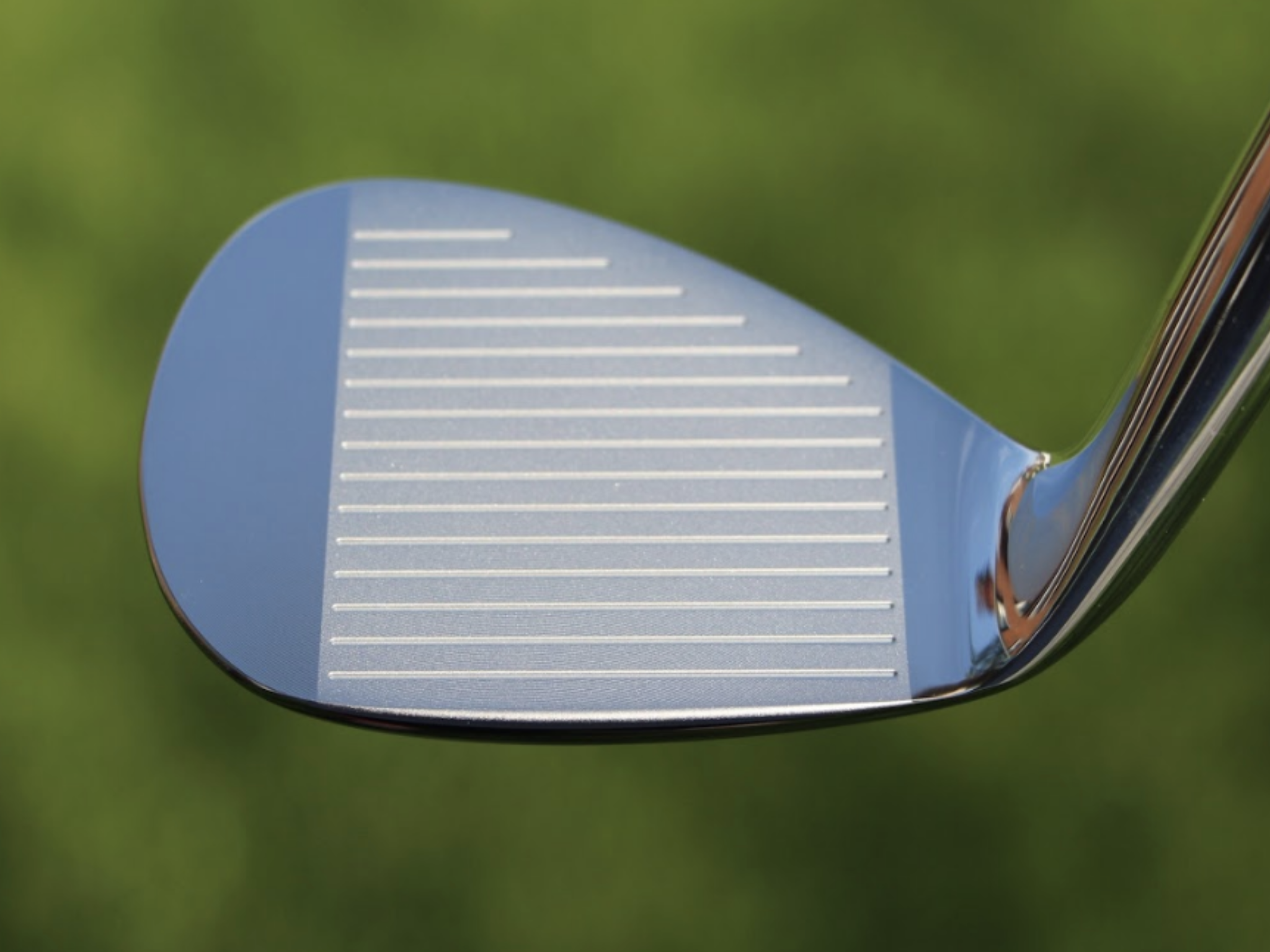
Of all the clubs in our bags, wedges are almost always the simplest in construction and, therefore, the easiest to analyze what might make one work differently from another if you know what to look for.
Wedges are a lot less mysterious than drivers, of course, as the major brands are working with a lot of “pixie dust” inside these modern marvels. That’s carrying over more to irons now, with so many new models featuring internal multi-material technologies, and almost all of them having a “badge” or insert in the back to allow more complex graphics while hiding the actual distribution of mass.
But when it comes to wedges, most on the market today are still single pieces of molded steel, either cast or forged into that shape. So, if you look closely at where the mass is distributed, it’s pretty clear how that wedge is going to perform.
To start, because of their wider soles, the majority of the mass of almost any wedge is along the bottom third of the clubhead. So, the best wedge shots are always those hit between the 2nd and 5th grooves so that more mass is directly behind that impact. Elite tour professionals practice incessantly to learn to do that consistently, wearing out a spot about the size of a penny right there. If impact moves higher than that, the face is dramatically thinner, so smash factor is compromised significantly, which reduces the overall distance the ball will fly.
Every one of us, tour players included, knows that maddening shot that we feel a bit high on the face and it doesn’t go anywhere, it’s not your fault.
If your wedges show a wear pattern the size of a silver dollar, and centered above the 3rd or 4th groove, you are not getting anywhere near the same performance from shot to shot. Robot testing proves impact even two to three grooves higher in the face can cause distance loss of up to 35 to 55 feet with modern ‘tour design’ wedges.
In addition, as impact moves above the center of mass, the golf club principle of gear effect causes the ball to fly higher with less spin. Think of modern drivers for a minute. The “holy grail” of driving is high launch and low spin, and the driver engineers are pulling out all stops to get the mass as low in the clubhead as possible to optimize this combination.
Where is all the mass in your wedges? Low. So, disregarding the higher lofts, wedges “want” to launch the ball high with low spin – exactly the opposite of what good wedge play requires penetrating ball flight with high spin.
While almost all major brand wedges have begun putting a tiny bit more thickness in the top portion of the clubhead, conventional and modern ‘tour design’ wedges perform pretty much like they always have. Elite players learn to hit those crisp, spinny penetrating wedge shots by spending lots of practice time learning to consistently make contact low in the face.
So, what about grooves and face texture?
Grooves on any club can only do so much, and no one has any material advantage here. The USGA tightly defines what we manufacturers can do with grooves and face texture, and modern manufacturing techniques allow all of us to push those limits ever closer. And we all do. End of story.
Then there’s the topic of bounce and grinds, the most complex and confusing part of the wedge formula. Many top brands offer a complex array of sole configurations, all of them admittedly specialized to a particular kind of lie or turf conditions, and/or a particular divot pattern.
But if you don’t play the same turf all the time, and make the same size divot on every swing, how would you ever figure this out?
The only way is to take any wedge you are considering and play it a few rounds, hitting all the shots you face and observing the results. There’s simply no other way.
So, hopefully this will inspire a lively conversation in our comments section, and I’ll chime in to answer any questions you might have.
And next week, I’ll dive into the rest of the wedge formula. Yes, shafts, grips and specifications are essential, too.
- LIKE34
- LEGIT7
- WOW1
- LOL1
- IDHT2
- FLOP3
- OB1
- SHANK3
-

 19th Hole2 weeks ago
19th Hole2 weeks agoDave Portnoy places monstrous outright bet for the 2024 Masters
-

 19th Hole4 days ago
19th Hole4 days agoJustin Thomas on the equipment choice of Scottie Scheffler that he thinks is ‘weird’
-

 19th Hole2 weeks ago
19th Hole2 weeks agoTiger Woods arrives at 2024 Masters equipped with a putter that may surprise you
-

 19th Hole4 days ago
19th Hole4 days ago‘Absolutely crazy’ – Major champ lays into Patrick Cantlay over his decision on final hole of RBC Heritage
-

 19th Hole2 weeks ago
19th Hole2 weeks agoTwo star names reportedly blanked Jon Rahm all week at the Masters
-

 19th Hole1 week ago
19th Hole1 week agoReport: LIV Golf identifies latest star name they hope to sign to breakaway tour
-

 19th Hole2 weeks ago
19th Hole2 weeks agoNeal Shipley presser ends in awkward fashion after reporter claims Tiger handed him note on 8th fairway
-

 19th Hole1 week ago
19th Hole1 week agoBrandel Chamblee has ‘no doubt’ who started the McIlroy/LIV rumor and why





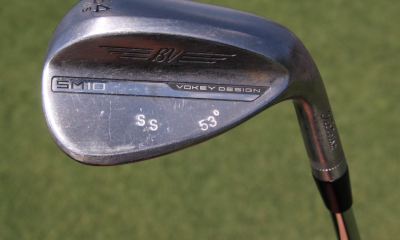





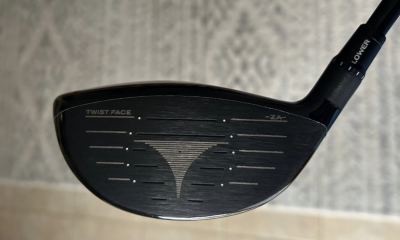

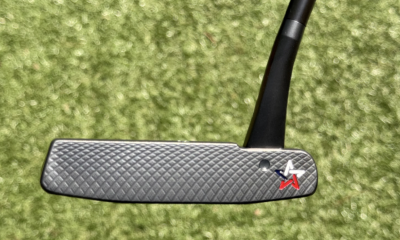








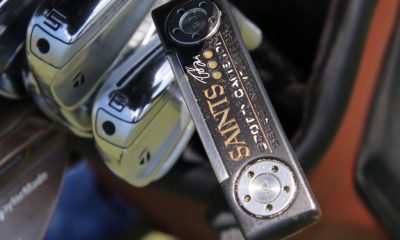

Donn Rutkoff
Dec 14, 2017 at 2:49 pm
Since you are Canadian you might under appreciate the following.
I think the USGA which holds about 5 national championship events (men, women, junior, amateur etc.) should Fly The Flag of the U.S.A. and start the tournament with playing The National Anthem. (Colin Winkydink of the NFL go take a leap. Tiger is no angel but he gives back to the community more, way more, than selfish Colin.)
A player should NEVER go backwards to play from previous spot. Just drop a ball take a stroke no matter what happened to the shot in question.
And USGA and PGA should NOT let Charlie Hoffman merely take a drop in sand due to whatever reason. He should play from a same lie. The official should have been authorized to bury his new lie in the sand the same depth he moved from.
Eric
Dec 11, 2017 at 7:45 am
LOL. What a funny article. I don’t think the author of this needs to complain about belly putters, square grooves, or longer distances when he has improved his handicap by 1.5 over a 20 year period. My best advice is to head to the putting green with a regulation putter for an hour or two whenever you feel like writing a sorry message to the USGA again
Norman Light
Dec 11, 2017 at 12:53 am
What we really need to talk about is the cost of golf. Golf companies are making the game for the rich people not the average person. One company you could buy a set of clubs for $20,000 And all the other companies you could pay between $900-$2000 what average American has that kind of money with a family of four this is totally totally stupid company need to get real and quit making millions and millions of dollars on the golf world thank you
Underachiever
Dec 9, 2017 at 9:51 am
I wish I hit the ball too far…
Michael
Dec 9, 2017 at 8:34 am
Excellent letter. All the golfers here who claim to be single digit should take note too. WE ARE ALL the game, not just one segment. The changes coming in 2019 are great, but there is no excuse for it to have taken this long. In the same vein, what is wrong with certain rules regarding the ball and other equipment that apply to the pros or USGA sanctioned championships?
Bob Racho
Dec 9, 2017 at 7:58 am
Good letter. I am an 80 year old golfer and love the sport. I have decided to F the rules, and play according to mine. They are common sense rules that all of us senior golfers should be happy with. Anchoring the putter helps my back and will let me play a few years longer. I do not wish to hit out of a bad lie, so I move the ball a few inches to a better one. I value my clubs and do not wish to ruin them by hitting a tree, so I move that ball to get away from that problem. I play from the forward tees and have enjoyment from hitting some clubs that I haven’t hit in years. I now use ALL of my clubs including my wedges.
I play public course and respect them all even if they aren’t as pristine as the private courses that the pro’s play on. I repair my ball marks and two others on each green, and divots as well. If our players did this our courses would be in way better shape and approach the private courses that are so pristine. I count my shots. The most important thing to me is to play with integrity to the sport that I wish to play, and that includes the changing of some idiotic rules for us older golfers that will allow us to play will into our 80’s.
So, to the USGA, you best make a change in the rules for the older golfers who are an integral part of keeping public golf courses open.
AJ
Dec 9, 2017 at 4:52 pm
Way to go Bob. I’m in the same mood as Bob is. However, I accept the challenge of honest play and do not
Move my ball regardless. Exception: local rules. Perhaps in 10 years I will agree with Bob completely.
Lock
Dec 14, 2017 at 6:06 am
“Make Golf Fun Again”
Crazy About Golf
Dec 14, 2017 at 11:34 pm
Bob, you’re the man! I agree….unless you are recording a score for handicap purposes or playing in a tournament (or for money with your buddies), play by YOUR rules (within reason). If you want to improve your lie in the rough, do it. If you want to move your ball out of a divot, do it. If you prefer to pick up when you’re within 2 feet of the cup, knock yourself out! This game is also meant to be enjoyed. Sometimes we take ourselves too seriously and it seems that the USGA isn’t helping.
Paul
Dec 9, 2017 at 6:16 am
When it rains at my course and the ball gets a bit dirty, I have to ‘play it as it lies’. How come THEY get Lift, Clean and Place whenever conditions aren’t perfect?
Have you ever noticed that you never see TV dootage of them cleaning their ball on the fairway?
Joe sixpack
Dec 8, 2017 at 6:31 pm
I agree with the spirit of this article. And I would add a couple things to it. First, equipment. The reason courses are too short for the pros now is because the usga totally failed to prevent drivers and balls from going way the f— too far. Changing the grooves on wedges was a moronic approach to this issue. The usga is in bed with the equipment companies and they need promises of greater distance to sell new drivers every six months. The usga allowing this is a corruption of the game. Second, technology. The usga have been Luddites when it comes to understanding and embracing technology. For years they kept distance measuring devices illegal. Why? Is pacing off yardages from sprinkler heads a skill that golf should test? Just let everyone use a laser and speed things up. They seem to understand this finally but it took 20 years. Technology isn’t going to slow down. New stuff is coming constantly and they’re too old and stuck in their ways to get out in front of it and make informed choices about which technologies are good or bad for the game.
Bill F
Dec 8, 2017 at 5:32 pm
I wish we could all sign that letter and truly send it!
Marc Halley
Dec 8, 2017 at 5:14 pm
Excellent article. Right on the money. Thanks much.
DaveT
Dec 8, 2017 at 3:26 pm
The article says, “USGA, you only care about the professionals.” Those disagreeing with the articles are mostly saying, “Stop feeling so important. You’re not. The professionals are. Don’t like the USGA rules? Play whatever rules or non-rules you want.” OK, let’s go with the idea that both are correct. The obvious response is for only the professionals to pay USGA dues. If the USGA does nothing for the duffers, seniors, and mid to high HCP — seems agreed by both sides — then let’s see how they get along without them.
Robert Roy
Dec 9, 2017 at 9:09 am
I would not pay money to watch professional golfers hit 260 yard drives. I want to see them bomb it 300+ because bit is what makes them special. Leave the ball issue alone or I think you will lose even more players and interest. The USGA needs to stop speaking for golfers without knowing our feeling.
JDMasur
Dec 8, 2017 at 2:40 pm
Time is the biggest detriment. 3 6s, not 2 9s would make it easier to introduce spouses and kids.play 6, or 12 or 18.
mM
Dec 9, 2017 at 10:47 am
Or, you can just quit golf, and make it easier on yourself and your family.
Sean Foster-Nolan
Dec 8, 2017 at 2:17 pm
Well done Jeff. You have echoed many of my comments, but in a more elegant way.
jd57
Dec 8, 2017 at 2:04 pm
Blaming the USGA for ruining your local round of golf is like blaming the NFL for ruining your neighborhood game of football. Has literally no effect on you. They’re a professional sports governing body, not the local gestapo policing your round.
Scrubby
Dec 8, 2017 at 3:24 pm
Not exactly. The PGA governs the pros. The USGA is for all of us.
John Uphoff
Dec 8, 2017 at 6:51 pm
PGA governs the tours
USGA and R&A govern all golf
Bifercation is present in many sports. Metal bats in amateur baseball
The shorter distance on extra points in football
Several different rules in basketball
No fighting in amateur hockey etc
Golf isn’t for the professional golfer only a very small % of golfers ever shoot par most never break 90
George
Dec 9, 2017 at 10:23 am
Yeah and the should not be. A amateur organization running a professional event is a JOKE.
dbleAGLE
Dec 8, 2017 at 1:54 pm
If you really want to help the rest of us give us a little book of slopes for every green we play and a caddy to confirm the break.
Pros make tons of putts but then again…Pros get tons of info about EVERY putt we lemmings dont.
Dilly Dilly Indeed
mM
Dec 9, 2017 at 10:51 am
Yeah? But then Pros usually don’t ever play as a 4some as we do on public courses, and some public courses send out 5somes. And, the Pros are still playing their rounds in 5 hours with a 3some. With a 4some, it’s a guaranteed 6 hour round. When they play with Ams at places like Pebble Beach in the Pro-Am all the way thru to the weekend, their rounds take 6.5 hours. You really want us Ams to carry AIM point maps? Your weekend rounds will take 7 hours with your regular 4somes.
Chris Carpenter
Dec 8, 2017 at 1:08 pm
If you aren’t using your 14 handicap to pay your mortgage, speaking as “Everyman” may be a bit of a stretch. I’m guessing if [generic] you wanted to anchor your putter to eek out an 86, nobody would care. If [generic] you wanted to hit from a forward set of tees to enjoy your round and leverage your lower irons during a round rather than mid to high, that would be okay too.
Amateurs are not pros and we don’t have to play under the same scrutiny or tight guardrails if we don’t want to. Play a breakfast ball. Carry 17 clubs. Anchor your putter. Play whatever tees you want. [Generic] We may need to take ourselves a bit less seriously as amateurs and remember to just play. If you’re playing in a tournament, play by the rules. Otherwise, literally everything you do on a course is just practice for the sheer enjoyment of the game. My opinion (worth about $0.03) has changed significantly since playing NCAA golf 20 years ago and being a middle-aged father of 3 who just wants to get a round in when I can now.
Oscar Farley
Dec 8, 2017 at 2:00 pm
The USGA should take 15 percent of what they give out to the already millionaire winners of tournaments and help supplement green fees for those of us that simply want to feed our families instead of paying jacked up weekend green fees.
George
Dec 9, 2017 at 10:26 am
Great, Just what the game needs. A Obama spread the wealth solution. The USGA nor anyone else you be paying to supplement anything in your life PERIOD.
Michael
Dec 8, 2017 at 1:08 pm
How about the “Game we call penalties on our selves” A game of honor, integrity and sportsmanship.
Then they say you can’ post your solo games for a handicap!!
So much for trust.
Darryl
Dec 8, 2017 at 1:40 pm
Sorry, I agree with the USGA on that one. When you play alone you’re not playing you’re practicing and those scores shouldn’t count.
B Johnson
Dec 8, 2017 at 1:56 pm
golf is an individual sport, but you cant play a legitimate round by yourself?
anybody who wants to phoney their handicap still can do so
I dropped the handicap …. dont miss it…it is just as legitimate to give a truthful answer to the question “what do you hope to shoot?“ on the first tee
OB
Dec 8, 2017 at 2:30 pm
I agree that solo golf is only a practice round and not playing to register a score with other golfers according to the Rules of Golf.
I play a lot of solo golf in the evenings and I usually play with a 6/7/8/or 9-iron and lob wedge and play 6-12 balls to sharpen my short game. I do carry a full set too, but I play 3 balls over 9 holes (3 x 9 = 27 equivalent holes) because I already know how to walk! And when I do play 3 balls I can play scratch golf, but not with the same ball!!!
😉
Steve S
Dec 9, 2017 at 8:58 am
I play a lot of solo golf. I’m retired and most of my golfing friends still work. That and I really don’t like people. They tend to distract me and ruin the round. Plus I can play much faster which is more fun and better exercise. If I want to register my handicap I will since I count all my strokes and play the ball as it lies. Makes the occasional sub 80 round that much more enjoyable and feel like I actually accomplished something. I’m a member of the USGA…mostly just to get the “free” US Open hat.
Vic Man
Dec 8, 2017 at 12:52 pm
Dilly Dilly! Absolutely agree.
Ma Ja
Dec 8, 2017 at 12:27 pm
My main issue with courses that are pushing the ” Play 9″ initiative is that they want us to play 9, but they want to charge us for 18!!! How about “Play 9, Pay 9”???
Scott
Dec 8, 2017 at 12:31 pm
+1
Al
Dec 8, 2017 at 12:32 pm
I think you need to take that up with your club not the uSGA.
CB
Dec 8, 2017 at 12:22 pm
Jeff, you forgot to say:
It’s me, the Amateur, who pays the greens fees at all the courses and support the courses from closing and help the professionals who run the courses and help them make money from teaching at the courses and driving ranges all across the country.
JJVas
Dec 8, 2017 at 11:57 am
As a 2 hcp, I completely agree. Tee it forward and play fast enough to not enjoy the $$$ you’re putting down… on a course that is now longer and tougher than ever before… but feel bad about your technology while you only get 20 yards on me when you need 60 to compete. Sound right?
Don’t worry, just because every other professional sport is smart enough to have their own rules, doesn’t mean we have to be. As an added bonus, some 25-year old wearing Rickie Fowler pants who gave this a “shank” will always have his lecture ready for you because he has “perspective”. Good luck!
Doug Stiles
Dec 8, 2017 at 11:56 am
Be nice to see what idea he has for USGA to do something better. What exactly have they done wrong. do you want them to send some of the money Koepka won to you so you can play for free???
You are picking low hanging fruit – Go play golf and enjoy the time away from real life.
Chris Carpenter
Dec 8, 2017 at 1:10 pm
Yes. This.
Stephen
Dec 8, 2017 at 11:52 am
Each one of us should Play from the correct Tee box according to our abilities and then it doesn’t matter about course length. I am not in favor of making the size of the hole bigger. If your ball stops within 3 feet of the hole, pick up your ball and pretend your next putt went in and move on to the next hole like most average golfers do or should do, and quit slowing course play for the rest. If you hit eight strokes on any hole, and there are people waiting behind you to play, pick up your ball and move to the next Tee box. Not rocket science. Oh and get take a few lessons, and go to the golf range and practice your putting and hitting other clubs in your bag.
CB
Dec 8, 2017 at 12:25 pm
Or, America could be a bit more responsible like some other countries and force people to have to have licenses to play the game, after having gone through a quick test of their abilities and basic knowledge of the rules and etiquette of the game before they are even allowed to step onto a full-sized golf course.
Shawshankapotomus
Dec 8, 2017 at 12:41 pm
That’s it. let’s create a new licensing bureaucracy. That’s what we need. You can’t be serious.
CB
Dec 8, 2017 at 1:42 pm
https://en.wikipedia.org/wiki/Golf_license
Shawshankapotomus
Dec 8, 2017 at 9:17 pm
I wasn’t questioning whether Europe does it or not. I was questioning whether you seriously want to make a game that already has accessibility issues even more inaccessible. I find the idea of a golf license repugnant.
CB
Dec 8, 2017 at 1:46 pm
https://www.angloinfo.com/how-to/germany/lifestyle/sports-leisure/golf
DoubleMochaMan
Dec 9, 2017 at 12:23 am
Cool. If I didn’t have to putt out my 3-footers I’d shoot about 8 strokes lower.
Bob
Dec 8, 2017 at 11:35 am
The USGA is disingenuous about moving up. I am 70 years old and have moved to the senior tees. After hitting a 200 yard dive from the senior tee I am still 30 yards behind a 45 year old hitting from the white tees. I am hitting a 7 wood to the greens d the 45 year old is hitting a 7 iron. Yet the USGA in their wisdom requires that I lower my handicap by three strokes when playing against this guy. Thanks for making your game even harder for senior players. Several of my fellow senior players and Ihave Idropped our USGA membership and are not planning on rejoining soon. But as the author said they just don’t care about older players.
Another Bob
Dec 8, 2017 at 12:06 pm
Amen. This could hVe been written by me.
Scott
Dec 8, 2017 at 12:29 pm
Bob, First, it is called a handicap not a handbobmymoney. You get more strokes if you are a worse player. If you like to rake in putts from everywhere and like to have a vanity handicap, then you will pay the price when you bet. And if you play the course shorter you change angles, hazard distances, strategy, etc. Distance is not the only factor. Second, every golfer has strengths and weaknesses. Maybe the guy who hits it further is more wild or has a worse short game. Stop whining about giving up strokes when you are playing an entirely different course, no matter how far you hit it.
Murv
Dec 8, 2017 at 12:46 pm
I agree completely.
HDTVMAN
Dec 8, 2017 at 11:24 am
Just like the NCAA. They are a bunch of know-nothing sliver-spoon-fed high society MORONS who are in it just for their EXCLUSIVE clicky country club trash buddies. They need to go away!
Joseph dreitler
Dec 8, 2017 at 11:47 am
Sorry, but they do nothing special for those of us fortunate enough to belong to private clubs. Until people are willing to accept that the game THEY play is a different game than WE play, it is all talk. If we bad amateurs need to be able to say our equipment must be the same as theirs, we will pound 210 yard drives and flail 5 woods at greens while they hit it 340 with their drivers. MLB players need to use wooden bats because if they did not the ballparks would all have to be extended and rebuilt to 430 feet down the lines and 520 to dead center.
Regis
Dec 8, 2017 at 11:21 am
No one says that the author or anyone else has to play golf by USGA rules. No one says anyone has to even keep score. If your not in a tournament play whatever game you want. I’ve been a member of the USGA since 1986. I’d wager the author has never plunked down the 20 bucks to join. Not even for the free hat. I have some issues with some of ru!ings of the USGA (and the R and A -let’s not forget it’s a joint venture) but overall they do a great job. This “article” is just mean spirited and the fact that the author took up golf fairly recently should surprise no one
Chris Carpenter
Dec 8, 2017 at 1:27 pm
Well said. Not keeping score forces a significant shift in perspective about the game. There are times that it is relevant to score your round, but there are also times when the big picture of a course, layout, how your shots feel, what you are grateful for, etc…is less about score and more about taking in the whole experience and not just 86 measurements of it (if you’re a 14).
Uhit
Dec 8, 2017 at 3:14 pm
How big is the market for non conforming golf equipment (driver, wedges, balls)?
B.t.w.
If you want to grow the game, then you have to listen to the ones, who are the growth:
The newcomers, who joined recently…
…lets say, within the last decade.
And I think it is no good idea, to touch the balls, they grew up with.
ron
Dec 8, 2017 at 11:18 am
The USGA is doing just fine The PROS deserve all the money they earn !! Check out other sports!!
Anchoring is cheating … and never should have been allowed
Steve Cantwell
Dec 8, 2017 at 11:18 am
Leave it to a Canadian to come up with such a far-fetched fairytale!
Philip
Dec 8, 2017 at 12:18 pm
Seriously, as if Americans have never had some pretty far-fetched fairytales … keep countries out of it …
Tbone
Dec 8, 2017 at 11:12 am
Jeff plays at a private course. Enough said!
Wyomick
Dec 8, 2017 at 11:11 am
The USGA are a bunch of Twits. I stopped dating her when she said I couldn’t use my 10 year old clubs in her tournaments. I wasn’t going to buy new ones just so she’d go out with me. I don’t spend any more money on HER anymore.
Bill
Dec 8, 2017 at 11:10 am
If the USGA wants to help amateur golfers, why not make the hole just a little bit bigger. Most of us play on muni courses that have greens that the pros never see. I understand the cost factor with maintaining great greens,but why no help is a little with the size of the hole. It could easily improve scores, which improves interest.
Aggowl
Dec 8, 2017 at 1:39 pm
The pros SHOULD play on imperfect course. They did years ago. NO ONE talks about the course condition being a factor in scoring, NO ONE. IT IS. Look at how putts had to be hit 30 to 40 years ago. It truly is a PUTTING SURFACE. RIDICULOUS!
Paul Vicary
Dec 8, 2017 at 11:01 am
Great article and oh so true. You can see where this is all heading. I see the cliff and hear the roar of the ocean.
Matt
Dec 8, 2017 at 10:58 am
No one at the USGA is saying you, the 14 handicap, hits the ball too far. That argument is so bad it must be purposefully disingenuous.
Chuck
Dec 8, 2017 at 11:20 am
Exactly! And the USGA didn’t want to take your old square grooves away, either. You were allowed to keep them. Because they didn’t even matter, when like most average retail amateur golfers, you were buying Surlyn and Ionomer (not expensive tour-level Urethane) golf balls.
Jody
Dec 8, 2017 at 11:36 am
Yet before long they will change the ball and or the rules because .05% of golfers in the world hit the ball too far. They’ll say it’s in order to uphold the integrity of the game when in all reality they will just be making the sport harder for the majority. Then we’ll again be hearing the apocalyptic whistle about needing to grow the game, all while the USGA is being a major part of the problem! Football, baseball, and basketball all have different rules for the professionals and it doesn’t belittle the game or effect how most people view these sports. Why should golf be different?
Tal
Dec 11, 2017 at 2:41 am
Golf is different because you play the course, not the man so you can directly compare your game to the pros. It loses some magic without being able to do that.
Rich
Dec 8, 2017 at 10:24 am
Right, because they haven’t just spent the last ~5 years rewriting the rulebook to make the game you enjoy easier.
John B
Dec 8, 2017 at 11:01 am
If the USGA is so into the anchoring ban why aren’t they enforcing the rule. It’s quite clear they are still anchoring their forearm to their body. Read the rule, it’s a violation.
Rich
Dec 9, 2017 at 5:57 pm
Oh for goodness sake, give it a rest! 4 stroke penalties are being given out in professional golf costing players tournaments. I hardly think they are going to let players continually violate a rule week in week out withouth penalty.